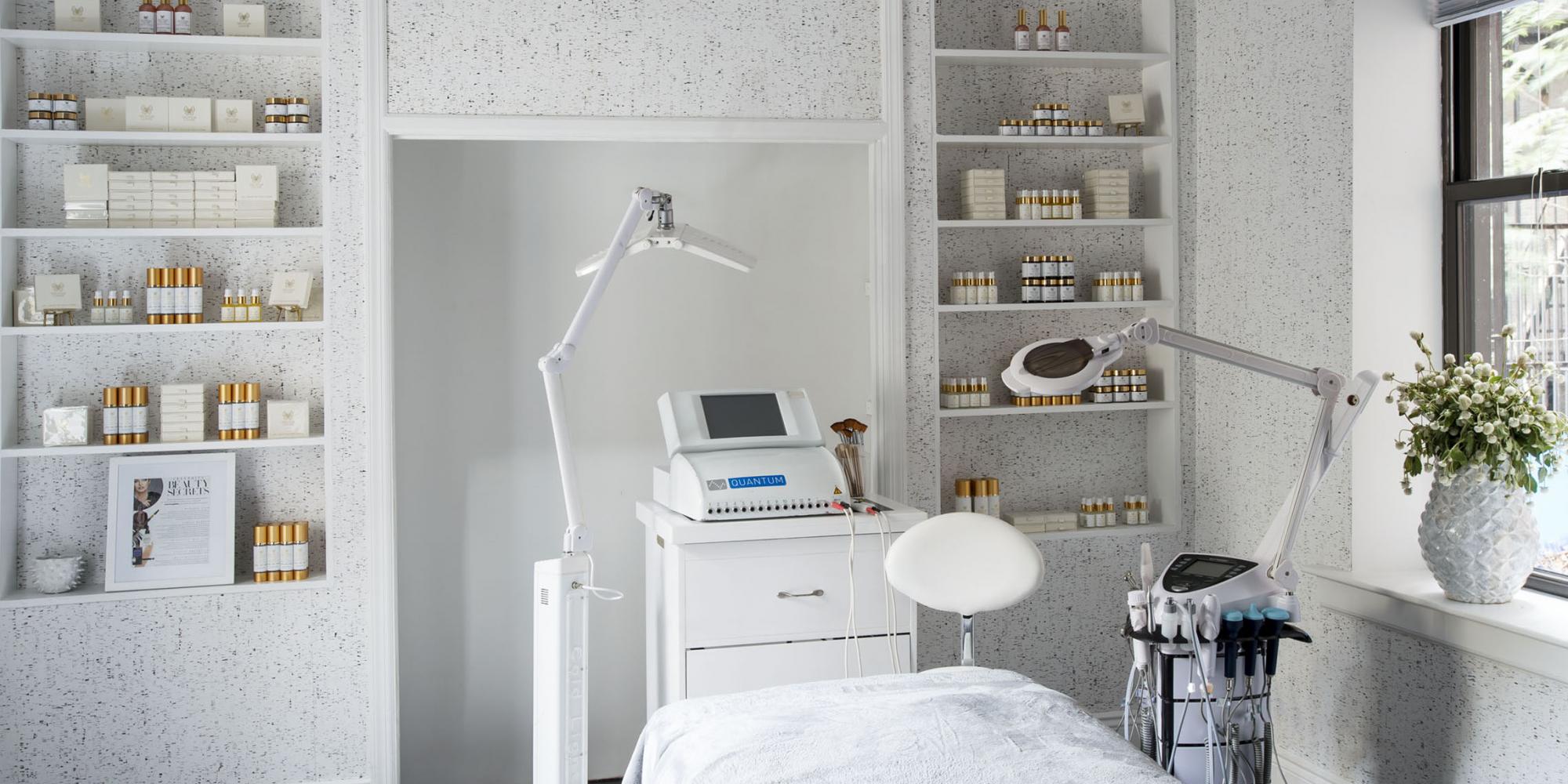
Celebrity Facialist Georgia Louise And Her Beauty Brand Are Growing And GLO-ing Up
Georgia Louise was forced to start from scratch in 2010 when she left a London skincare practice she’d established over a dozen years to follow her future husband to New York City. In her adopted home, Linda Evangelista and an electronic malfunction changed the trajectory of Louise’s career. A leading professional microcurrent machine manufacturer summoned her to fix the supermodel’s broken $40,000 unit. She tried her best to remember the Skype tutorial the company had provided about repairing the unit—a tutorial involving chewing gum. “I managed to use the chewing gum to stick back the circuit board and use tape to tape the connection that was broken,” she details. “I plug it back in and, voilà, the machine lights up. I’m like, “Thank you, God.'” She gave Evangelista a facial that day and, when the facial was done, Louise recounts, “[Linda] stood up and said, ‘Can you come again tomorrow?’ I came the next day and, then, the next day. My only client for five months was Linda.” Soon, Louise solidified a reputation Stateside for doing much more for famous clientele than MacGyver-ing microcurrent machines, and her roster of big-name devotees (e.g., Alexander Wang, Emma Stone, Gwyneth Paltrow, Jennifer Lawrence and Amy Schumer) ballooned. Beauty Independent chatted with the British-born budding beauty mogul about growing her customer base, scaling brand operations and stepping out of the treatment room to take her business to the next level.
How did you build your celebrity client base in the U.S.?
When you have a gift or an experience and a story to tell, and you’ve got the best training that you have time to get, you have a vision. Once you have those two key things—a vision and a skillset—especially in a place like America, you can hit the ground running.
I was at Linda’s one time, maybe five months in, and the door rings, and it’s Gucci Westman. She was like, “I want what she’s doing. What are you doing to her?” I’m like, “We’re doing microcurrent, lifting her skin.” She goes, “Can I lay down, too? So, Linda got up, and Gucci lays down and she’s like, “Can I see you as well?” I’m like “Sure, why not?”
Then, I had one international client who used to go back and forth from New York and London, Tracey Amon. She’s like Jackie O, she’s probably the most sophisticated client I ever had. She said, “I’m coming into New York. My best girlfriend is Sandra Ballentine from W magazine, and she would love to see you. I’ve been telling her about you.” So, Sandra Ballentine was the first editor to write about me, and she spread the word about me. And Gucci Westman and Linda spread the word about me, and that was that.
I set up a treatment room in a nursery room in my apartment because I had a baby. I did what I could do. I couldn’t afford a nanny at that time. I had my little boy, and a client would literally be babysitting while I was doing facials. It was babies and facials. That was my life. I had my green card. I had my license. I made sure that I had all the right paperwork. And, then, I was ready to go.
I grew the business with a few clients that believed in what I could do. I built it from the ground up all over again, and I was fortunate to be at the right place at the right time. I put myself in an opportunity where I put my name out there and was introduced to some great clients. It grew from one to 5,000 clients that come from all over the world. We have clients coming from Korea, Australia, Texas, Florida, Canada, the U.K., Germany, Switzerland. Now, I have grown to a team of nine. We have four amazing elite skincare specialists that we have trained here, and we’re growing organically. I always believe in growing organically.
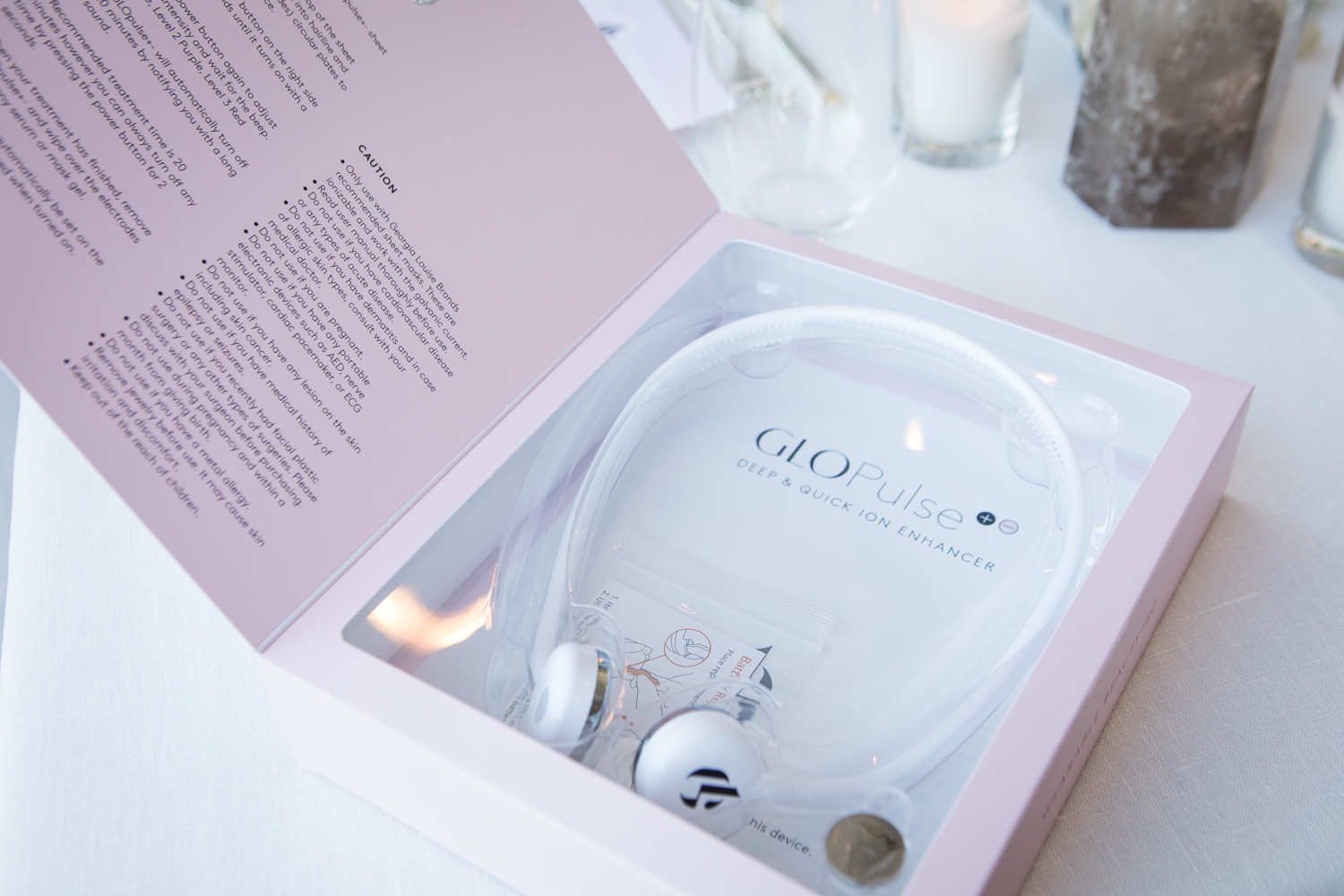
When did you launch your product line?
Before I left to live in America, I did a formulation course in the U.K. At that time, there wasn’t really any pioneering organic, natural brands. I was tired of it. I created an oil cleanser that had chamomile and lavender, it had sensual experience. I wanted to have a pure oil that smelled great. I was whipping up balms and oils, I would literally take five ingredients and turn the kitchen into a chemist’s lab and make my own product. When I got to America, I was doing the same thing all from my kitchen.
One of the greatest challenges for any brand is scaling, especially when there are many people that have a vision and dream to create a product. It’s such a competitive world. And, unfortunately, there are not many companies that help small brands. When you’re looking at packaging, for example, an amber jar, there’s generally only one, two or three shapes or styles you can select. If you want to have a nice bottle with a white lid, you sometimes have to buy 5,000 of these little bottles. If you’re a young entrepreneur with a vision, you’re going to be laughed at. That happened to me.
My husband said, “Why are you going to order 5,000 bottles?” I said, “Because I have a dream, and I want it to happen. I know that my product can sell.” He said, “You can’t order 5,000.” I said, “This amber bottle looks terrible and cheap. It doesn’t look nice, and I want to present my product really well.” He said, “You’re crazy. Where are we going to sell 5,000 bottles?” I decided that he [was] right. I had to take steps. I’m rebranding because now that I can afford to buy more jars. You do have to start small. You can’t take big risks when you’re a startup. There are companies that you can find that can help you, and you can grow from a hundred bottles to 500 bottles and, then, to 1,000 bottles.
It was a lot of work and traveling to find someone that could help me with such small orders. Labs won’t even look at you unless you’re manufacturing 10,000 to 15,000 per bottle of jar or cream, [but] I was able to find a lab. The struggle for any brand is, how do you grow from the kitchen? Sometimes people just don’t. They get stuck [as a] niche brand making products in the kitchen. There’s no scalability, so, sometimes you will have to take a risk and take a job, and you may have to ask for money.
We all want to have a SKU line of 10 or 11, but sometimes you have to start with one star product that you love, and you have a passion for. You try it in your family, your aunt, your sister, your brother, your neighbor. You start with one, and you put all your energy into one. Look at Vintner’s Daughter. She started with one oil and, now, she’s exploded. There are so many brands that start with one product. My advice always is start with one, and do it right.
I understand that you can’t have it screen-printed, and you can’t have a fancy box. I don’t have boxes yet. That’s my next phase. You just have to be patient and have a vision, have a plan, find suppliers that can provide for you, that you trust, that can give you that scalability, and that you can grow into. That’s pretty much where I am today. I’m still growing the brand. It’s seen as a big brand, but we’re still a small brand. We have a new device, GloPulse, which is doing amazingly well, we have the Georgia Louise products, and we have the spa.
Have you had any outside investment?
I don’t have any outside investors. I’m self-funded. If you’re self-funded, then, you start small, and you have growing pains. It’s an amazing journey and adventure, and I wouldn’t change any second of it, [but] trust me, I’ve made so many mistakes along the way. That’s how you learn. You’ll probably pick the wrong bottle, and you’ll make a mistake on the first label and get a typo or you may not like the color, but it’s all part of growing into something. People really have to be patient when they start a business because it does take a lot of time in this competitive environment.
Tell us more about why you’re rebranding your product line.
I’ve always been known as the gadget girl. Where the brand is going is a movement to devices and and creating home facials. I can’t touch so many faces right now, unfortunately. I’m incredibly busy, so how can I make a difference for people who can’t see me? I want to touch these people at home. The brand started with a few products. Now, it’s all about creating facials at home. The brand has to evolve. The packaging now resembles where we are today. It’s not just about touching A-list celebrities. It’s about touching millennials and the mass market. The brandIng is now pink with clean print. I’m changing with the brand and trying to tell a story. That’s why we’re changing the branding.
“I’m self-funded. If you’re self-funded, then, you start small, and you have growing pains. It’s an amazing journey and adventure, and I wouldn’t change any second of it, [but] trust me, I’ve made so many mistakes along the way. That’s how you learn. People really have to be patient when they start a business because it does take a lot of time in this competitive environment.”
How do you educate consumers to use devices like the GloPulse properly at home?
We have an app with tutorials. Every person that purchases a tool can download the app and take a step-by-step tutorial. That’s very important to me. It’s very, very hard to get appointment, but I want people to be educated. What’s also important to me is how the steps are on paper. So, in every single device, there’s a really detailed training document inside with pictures and diagrams.
My first device was the butterfly stone, which is now a real trend because jade rollers and rose quartz rollers are really evolving. The stone was created 10 years ago. The butterfly stone is by far my most successful tool. From there, it goes to the freeze tools, which are wonderful to cool, calm and lift the skin. From there, it’s the GloPulse. Then, from there, it’s the LED mask.
The LED mask is really for the luxury market. It’s not for the mass market. It won’t be going out to my retail partners like Revolve or Nordstrom. It’s for clients that are majorly enthusiastic about LED light. They love the LED light in the atelier. They really want to have facials weekly, but they can’t get in. It’s for people who really take their skincare seriously and have the budget to do so. They want a professional LED mask. A mask of that quality usually are $2,500. [Mine] is slightly less than that.
My plan is to have scalability for the mass market. I’d like to do an LED mask of the likes of Neutrogena, but I’m not there yet. Development takes a long time.
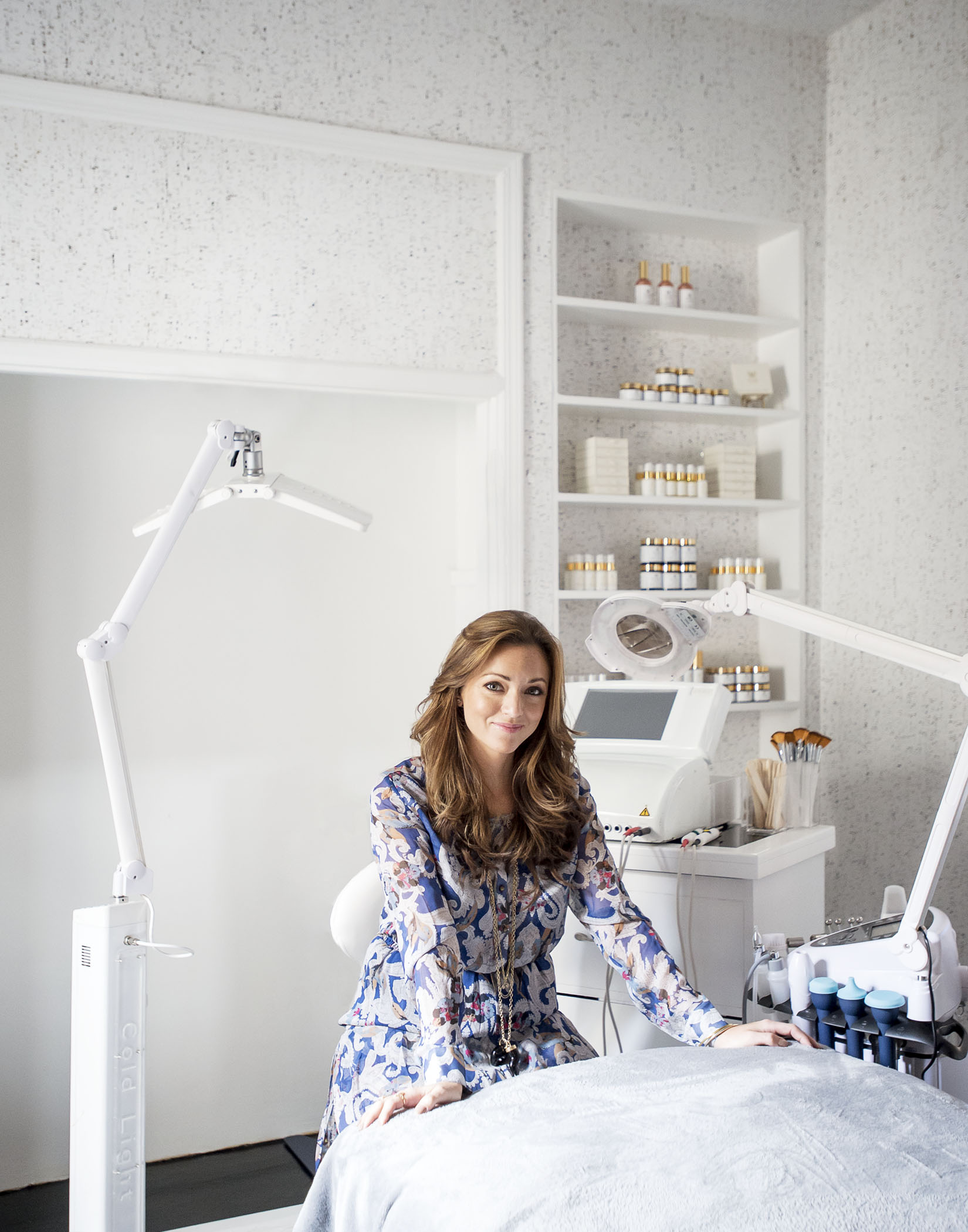
How do balance the atelier, the product business and your family?
Honestly, it’s very hard right now. There is no balance at this time. Sometimes, you’re high on life and family. Other times, you’re high on work and all the commitments. It’s a juggling act. Sometimes, I’m more involved in work and, sometimes, I’m more involved in family. No day is the same. During these scalability periods, when the brand is growing quickly, particularly in the past two years, it has been a challenge. I’ve grown my team from four to nine in six months.
My husband is a CEO. He works in finance for private equity. He turns companies around. At some point, I want to get my husband on board to help grow the business in 2019. You take steps, and you grow as your business grows. Then, there’s a point where you can’t do it all. You can’t wear 100 hats. Some things do slide. So, having a partner is obviously the next step for me.
I’m taking a baby steps every day to manage the growth. We now have a fulfillment center. It’s been such a challenge. For the longest time, I [was] sitting with boxes around my head. My office [was] filled with boxes and tissue paper and bubble wrap and tape. Now, the fulfillment center can take away a big part of that job. I never had PR before. I was so lucky that people would come to me to write about me. It wasn’t until this year, four months ago, that I signed up with a PR agency. I still do my own Instagram.
We took major steps this year in development and growth. Partnering with the right people is so important. I interviewed 15 PR companies until I found the one I wanted to work with, and I had 10 meetings with them until I was sure that they were the right fit for me. Also, for my team, I have to make sure that my team members are the right fit for the brand so that they can continue on the message and the quality that I worked so hard for.
Where is your product line carried?
Revolve, Nordstrom and Goop.
Are you looking actively to get it into other retailers?
Yes, absolutely. It’s hard to scale when you’re in the treatment room. There’s no time to pick up the phone and speak to the buyer at Barneys or Net-a-porter. That’s why I’m scaling my team to get the support I need. My vision is to reach vendors that are right for the brand. I sell online because I think, as a small brand, until you have a stampede of a sales force, it’s better to have an online presence and sell direct-to-consumer. So, my whole strategy up until this point has been to sell online. For 2019, our strategy is to continue to be an online presence until we get some traction, a bit more scalability before we go out into a brick-and-mortar.
Are you going to scale back your time in the treatment room?
I’ve reduced my treatment room hours by 20 hours [per week] so that I could actually execute, manage and come up wIth a strategy with my team.
You have a robust product line of your own, but also use other lines. Why bring in and sell those other lines?
If you sneaked into Bobbi’s Brown or Charlotte Tilbury’s or Gucci Westman’s makeup bags, you’d see other brands in there. No brand has all the secrets and the answers. You speak to a hairdresser, do you think he’s going to have the same brand of shampoo, conditioner and brush? No. Why? It’s all about bespoke. I bespoke everything. When I was 18 and I worked at a Japanese spa in the U.K., it was an Elemis protocol, and you had to do exactly that protocol. I didn’t believe in that. I believe you have to give a client what their skin needs. So, I literally alchemized different brands together. I was using different things because I believed the client should have a balm if their skin is oily or they should be using a seaweed mask if they have breakouts.
I would be doing a disservice to my team and my clients if I just used my brand because my brand doesn’t have all the hero products that I love. I bring in what I believe in and give my clients what they need. I use professional brands only in the back bar. So, I don’t use Dr. Barbara Sturm, for example, in the back bar, but I’ll use professional-grade peels, enzymes, toners [from] Georgia Louise, Biologique Recherche and Elemis.
Is there anyone you haven’t yet had the opportunity to give a treatment that you would like to have as a client?
I really want to treat the Queen of England and have a cup of tea. I really respect [her], and I think it would be awesome to sit with her, give her a facial and make her feel like a million bucks.
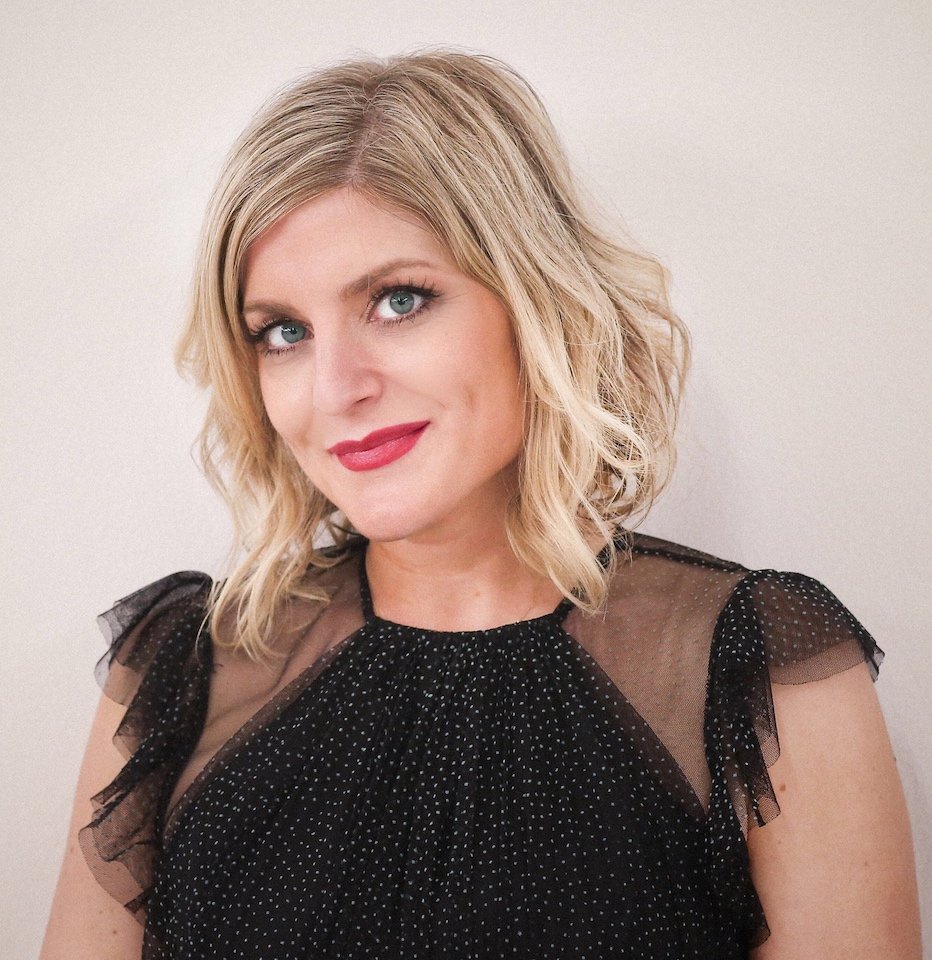
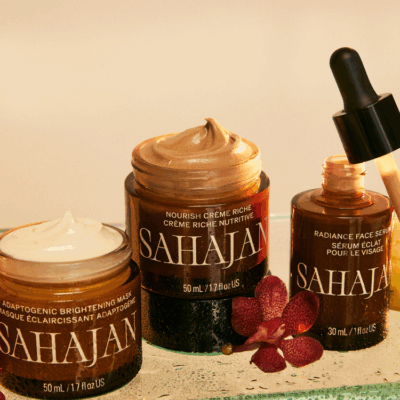
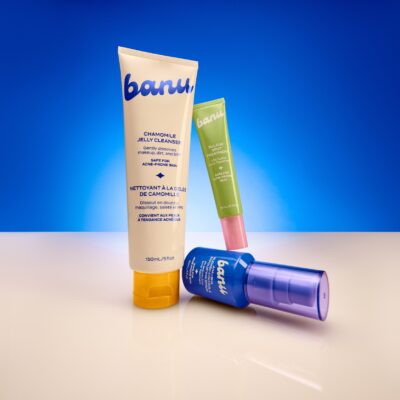
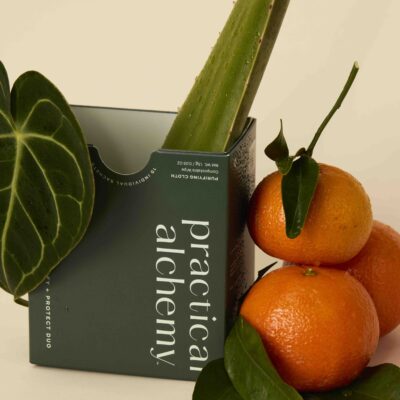

Leave a Reply
You must be logged in to post a comment.